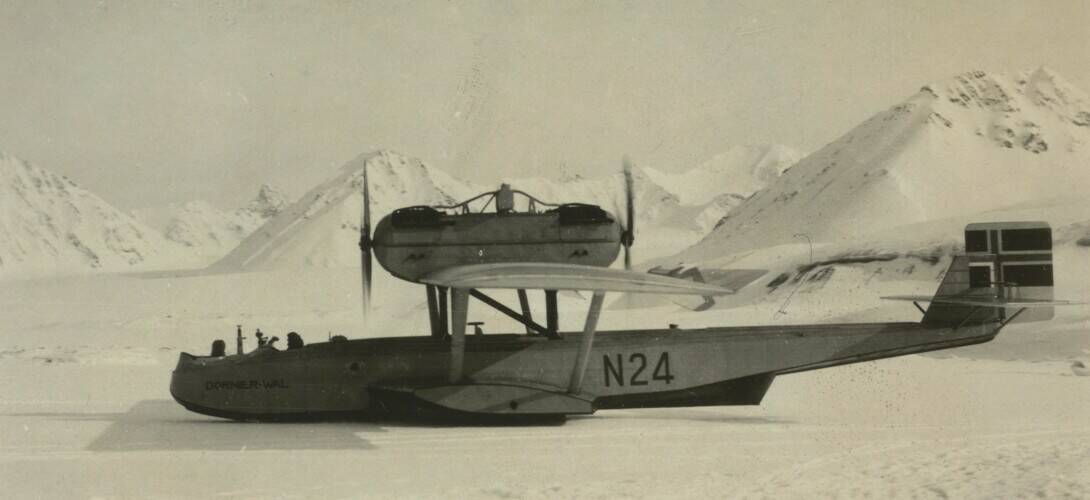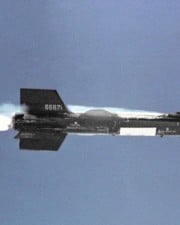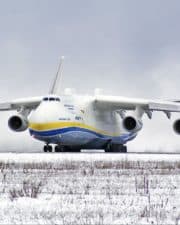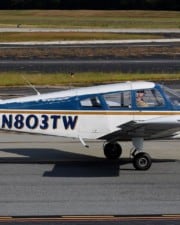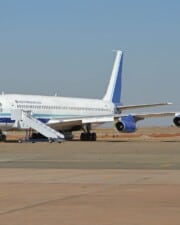Push-pull aircraft are supposedly the best of both worlds. They have the increased reliability and peace of mind of multi-engines whilst often maintaining the aerodynamic qualities and efficiencies of single engine aircraft when the engines are set out in a “centerline thrust” configuration.
Most aircraft built up until this point have been powered by a tractor configuration – where the engine sits at the front of the aircraft, pulling the rest of the aircraft along. A few have been built with the opposite – a rear-mounted engine that pushes the aircraft along.
Push-pull aircraft, as the name would imply, do both. One engine sits at the rear of the aircraft and pushes the aircraft along, whilst a front-mounted engine pulls the aircraft.
Once an incredibly popular design, many push-pull aircraft have come and gone. So this begs the question, which are the best push-pull aircraft ever built?
9. Fokker F-32
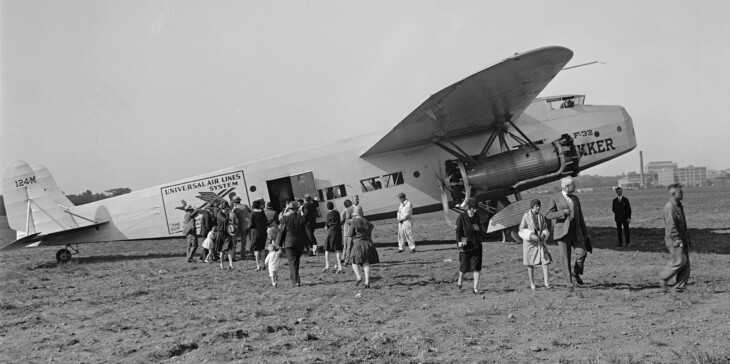
For the most part, push-pull aircraft have been either military or some kind of experimental aircraft. The Fokker F-32, however, was one of the few aircraft with a push-pull configuration to both be designed for and used in commercial service.
Introduced in March 1930 after a turbulent test phase which saw the first model crash, the F-32 entered service as one of the larger commercial aircraft built up until that point, able to carry up to 32 passengers in the right configuration.
Unfortunately, the F-32 only saw limited commercial service throughout the 1930s in spite of airline interest in the aircraft.
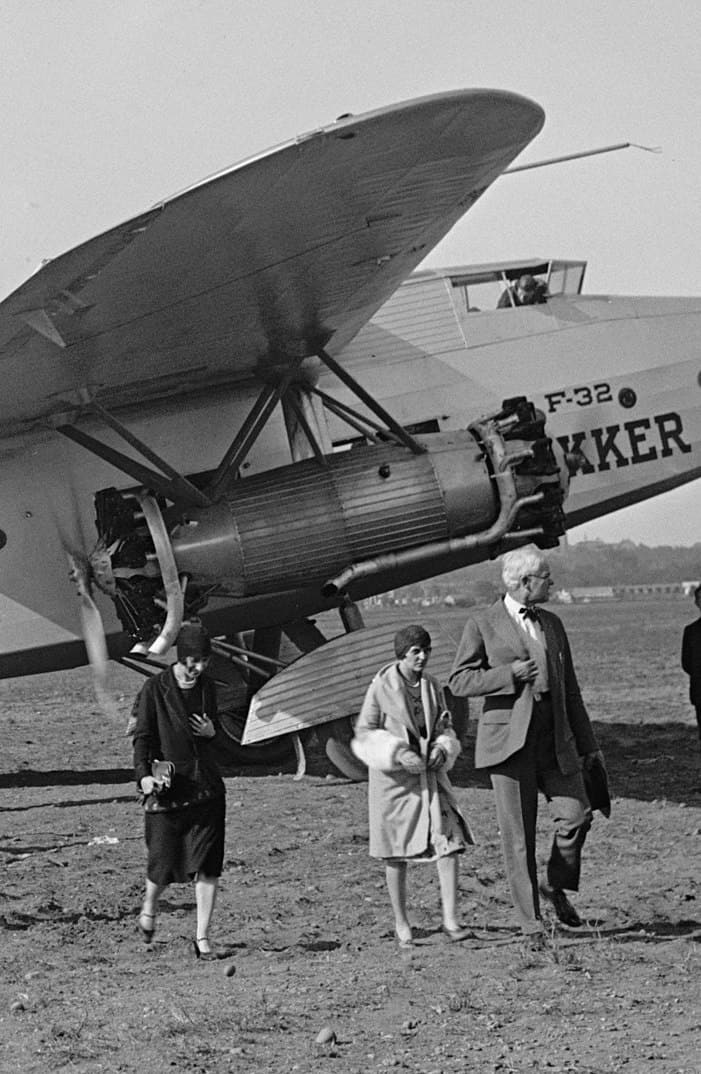
The reason only seven entered service was chiefly down to its higher operating costs, which few airlines were willing to pay for given the onset of the Great Depression. Despite this, however, the four engine behemoth proved two main things:
- Push-pull configurations could work for land-based commercial aircraft in a practical (eg. non-propaganda) capacity
- There was a market for higher-capacity airliners, so long as their operating costs per seat remained similar to their lower-capacity counterparts
Thanks to its four wing-mounted engines, the F-32 also had a far greater range and cruise speed than trimotors, helping to set off the “quad engine mania” that marked much of the 1930s, 1940s and beyond, when range and speed became airlines’ top priority.
8. Dornier Do X
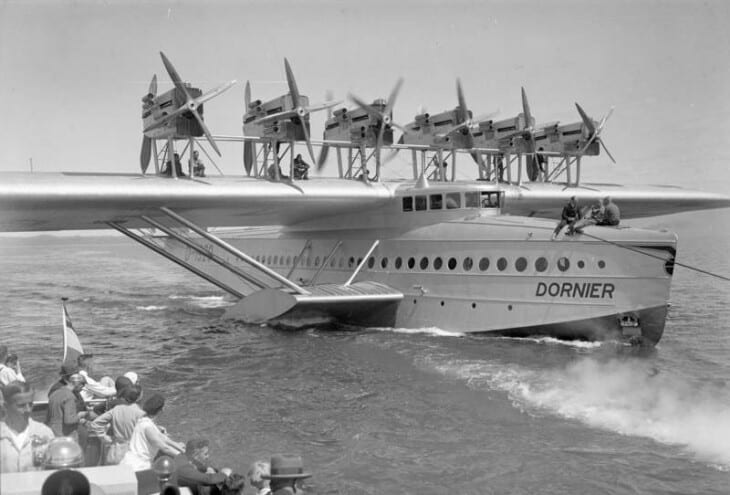
An absolute behemoth, the Dornier Do X was the largest aviation construction program of its time.
First conceived by Dornier founder Claudius Dornier in 1924 as an airliner larger and heavier than any that came before it, it took him over a year to perfect the design and make preparations for his team to build it.
Over four years and 240,000 man hours later, the Do X emerged from the Dornier factory in June 1929. Much like other huge aircraft would in the decades that followed, the Do X immediately got the public’s attention.
After all, it was the heaviest aircraft in terms of maximum takeoff weight (MTOW) ever at the time, at 56 tonnes.
The only way such a huge mass could be moved was for it to be fitted with twelve engines set out in a six tandem, push-pull configuration. Had a push-pull configuration not been used, the Do X’s wingspan simply wasn’t big enough to accommodate the engines.
On its 70th test flight on October 21 1929, it set a record for the total number of people carried in a single aircraft, carrying 169 people. This record stood for the next 20 years.
7. Rutan Voyager
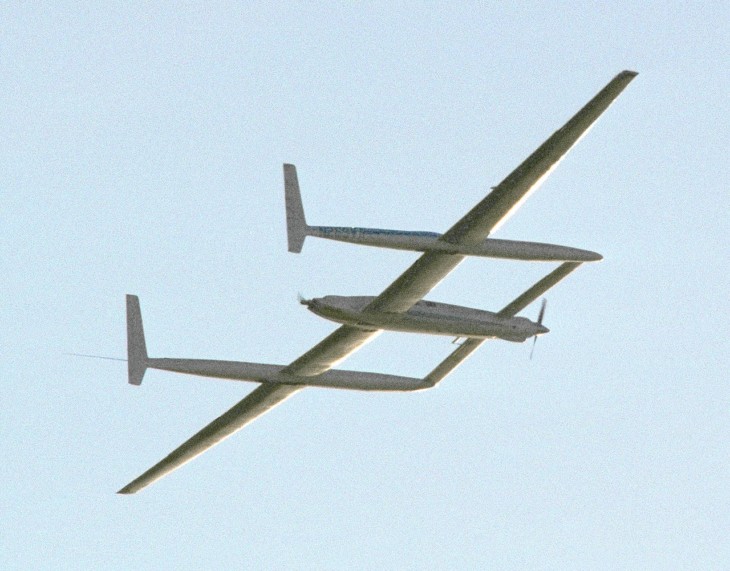
Circumnavigation of the globe has long infatuated the human race. Although the first aerial circumnavigation of the world occurred in 1924, and many followed in the years after, they’d always been done in multiple legs for refueling.
Designed by Burt Rutan with help from his brother Dick Rutan (together whose other aircraft include the Long EZ, Scaled Composites Stratolaunch and SpaceShipOne to name but a few), the Rutan Voyager was designed to perform the first non-stop, non-refueled circumnavigation of the globe.
With that in mind, the Voyager was built to be as lightweight as possible, meaning it was built nearly entirely out of carbon fiber, Kevlar and fiberglass which allowed it to be powered by only two engines laid out in a push-pull configuration for the best aerodynamic qualities.
Taking over five years to build from scratch between 1981 and 1986, many of the techniques Burt and Dick Rutan pioneered on the Voyager were later transferred into the worlds of civil and commercial aviation.
It’s thanks to the Voyager that aircraft from the SR22 to the 787 Dreamliner have more Kevlar, carbon fiber, fiberglass and other composite materials than metal in their construction.
And yes, just in case you were wondering, it did successfully circumnavigate the world non-stop between the 14th and 23rd of December 1986. For their efforts, the brothers, alongside co-pilot Jeana Yeager and crew chief Bruce Evans, were awarded the 1986 Collier Trophy.
6. Latécoère 521
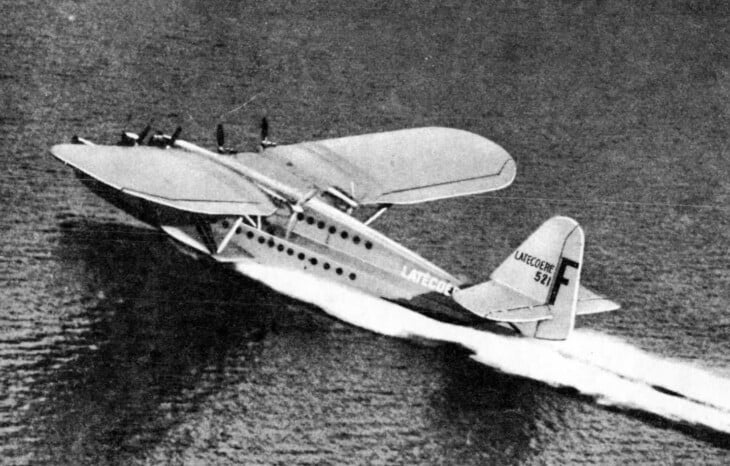
Physically resembling the smaller Latécoère 300, the Latécoère 521 (also known as the Laté 521) was principally designed to be the largest French-designed airliner built up until that point.
When it was first entered into service in 1935, it set a number of different records for its size, range and capacity among other things. The most famous of these records was that it was the first airliner with a capacity of over 70 people that flew transatlantic flights commercially.
By contrast, it took others like the British and Americans until nearly the end of the 1930s to do the same. The only way the Laté 521 was able to do this was thanks to its six engines being set out in a push-pull configuration.
And just in case that wasn’t impressive enough, the Laté 521 was the aircraft that made Air France what it is today.
Before acquiring the Laté 521, Air France’s commercial flights were limited to short and medium-haul flights. Those aircraft it had that were capable of long-haul flights were relegated to air mail flights only.
However, as the Laté 521 was a double-deck flying boat, it was more than capable of flying air mail and passengers at the same time, making it indispensable to the Air France fleet prior to its militarization in 1939 and subsequent destruction.
5. Tupolev ANT-20

Named in honor of famed Russian writer Maxim Gorky, the ANT-20 has more in common with its namesake than you might think.
A writer who is known as the founder of the “Socialist Realism” style of art, many of Gorky’s books were used to promote the ideas of socialism, and later Bolshevism. In other words, many of his books could be described as “propaganda”.
This was also the same for the ANT-20. Designed and built during the 1930s – the first full decade the Communist Party was in undisputed control of the Soviet Union for – the ANT-20 was built as a part of the “Gigantomania” phase of Soviet industrialisation.
As the name would suggest, “Gigantomania” was all about making the largest things, from dams to cities to statues. And aviation was not left out of this.
Designed to have the largest aircraft in the world, the Tupolev ANT-20 had a wingspan of 206 ft 8 in (63 m) and a total length of 107 ft 11 in (32.9 m).
To put that in perspective, the ANT-20 was built at the height of the Great Depression. An era where inventions that would define the 20th century like the atomic bomb were merely theory.
And it had a wingspan roughly the same length as the distance covered by the Wright Brothers’ first flight, something which took place only 20-something years previously!
As if that wasn’t impressive enough, it would take until WWII for any aircraft to surpass the ANT-20’s huge wingspan. This came in the form of the Douglas XB-19 heavy bomber, which never left the prototype phase.
4. Dornier Do J Wal
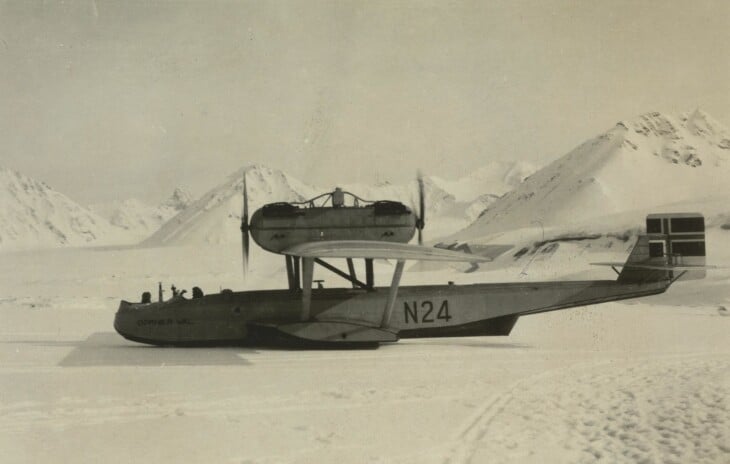
Nicknamed the Wal (or “Whale” in English) due to its whale-like appearance by German high command, the Dornier Do J physically resembles the much later and unrelated Dornier SeaStar.
Designed in Germany but mostly built in Italy to comply with post-Treaty of Versailles rules, the Do J was among the first aircraft to be built under license in different countries during peacetime.
Although it was primarily designed for commercial service, particularly in the transportation of airmail between Europe and Africa and the two Americas, the Do J became famous for its role in more pioneering affairs.
One of the few all-metal small flying boats in the early 1920s, and one whose engines were located at the top of the fuselage, rather than on the wings, the Wal was unintentionally perfect for landings on ice, snow and arctic waters.
Coupled with the then-ongoing Antarctic and Arctic Expedition Races, where explorers from different countries aimed to discover more about the North and South Poles, the Do J became the aircraft of choice for many of them.
Explorers like Ronald Amundsen (Norwegian; North Pole; 1925) and Alfred Ritcher (German; South Pole; 1939) both used Do Js to reach the places they wanted to explore. From these expeditions, we learned more about the North and South Poles than we had before.
Interestingly, the first aerial night crossing of the Atlantic was performed by Portuguese aviator Sarmento de Beires on the night of the 16th and 17th of March 1927. And the aircraft he and his crew used? A Dornier Do J Wal.
3. Dornier Do 335
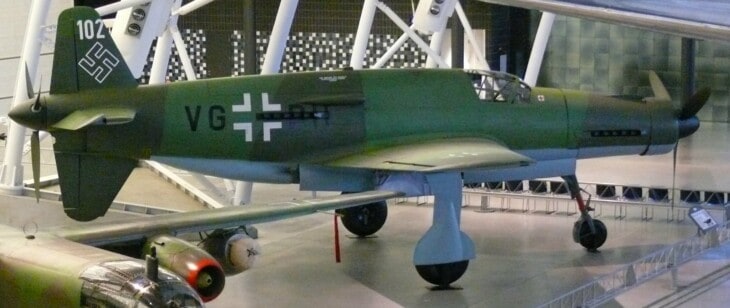
Known as the Pfeil, meaning “Arrow” in English, the Do 335 is certainly one of the strangest looking aircraft ever built, even by the incredibly weird design standards of WWII.
Powered by two engines in a then-unique “centerline thrust” push-pull configuration which reduced drag whilst increasing thrust, the Dornier Do 335 was the fastest piston-powered in the Luftwaffe’s fleet.
Indeed, it was only around 140 km/h (86 mph; 78 kn) slower than Nazi Germany’s premier jet of the war: the Messerschmitt Me 262!
Despite the fact it only saw limited action during WWII owing to delays in the aircraft’s production and flight testing, what little action the Do 335 did see gave it a somewhat mythical status in the eyes of Allied pilots.
Engaging it in combat was pointless; it was simply too fast for you to pursue and get a shot at.
After the war, the sole remaining Do 335 (which is now on display at the Steven F. Udvar-Hazy Center in Chantilly, Virginia) was studied by Allied engineers who used much of what they learned from the Do 335 to design and build many of the now-famous postwar GA aircraft.
2. Cessna O-2
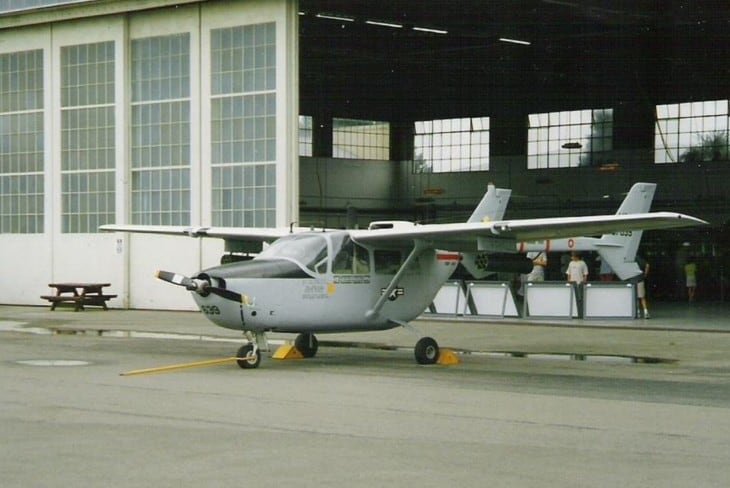
The militarized variant of the Cessna 337, the O-2 comes with all the technical and performance associated with its civilian counterpart in addition to the reputation it gained during the Vietnam War.
After briefly serving in a forward air control (FAC) role, where, despite its technical limitations in the role, the O-2 gained a reputation for being something of a workhorse, it became more famous in a different role: psychological operations (PSYOPS).
Equipped with huge speakers, the O-2 was tasked with flying over territory controlled by the Viet Cong to drop anti-communist pamphlets and play messages designed to encourage defections.
In total, some estimate nearly 40% of Vietnamese defectors were encouraged by messages and pamphlets originating from an O-2, marking something of a victory in a war mostly regarded as an American failure.
The O-2 also has one other commonly regarded feature: its longevity. First entering US military service in 1967, it was only retired in 2010. Other operators, like the Salvadoran and Botswana Air Forces, who acquired the O-2 in 1981 and 1996 respectively, still operate them.
1. Cessna 337 Skymaster
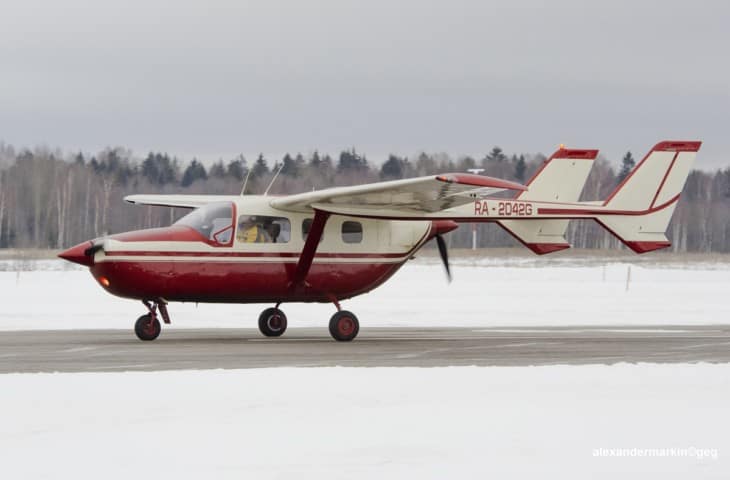
One of the few push-pull aircraft designed for civil and GA use, the Cessna 337 Super Skymaster is an improved variant of the Cessna 336 Skymaster; also a push-pull aircraft, originally released in 1962.
Slightly larger, faster and with a longer range than its predecessor, the Super Skymaster (or just “Skymaster” since the mid-1970s) built on the reputation of its predecessor.
Its predecessor had made a name for itself as a simple and reliable aircraft, as if one of its two engines failed in-flight, the Skymaster didn’t yaw due to the centerline thrust configuration. The Cessna 337 was even more so.
Even easier to handle thanks to aerodynamic improvements to the wing, engine cowling and fuselage, the Skymaster’s increased range and speed made it perfect for a variety of different roles, which it continues to fulfill to this day.
Despite having two engines, many countries don’t require pilots to have a multi engine rating to fly the Skymaster, which has allowed it to become a favorite of civil and GA pilots as well.
This fact also means it can be entered into air races, both for speed and distance. With this, several teams have sprung up around the Skymaster. Even the Red Bull air racing team uses a Skymaster!
Plus, the Skymaster was such a good aircraft that its design principles have been borrowed for a number of flying cars, including the AVE Mizar project, which combined the engines and twin boom of a Skymaster with a Ford Pinto.
Related Posts
